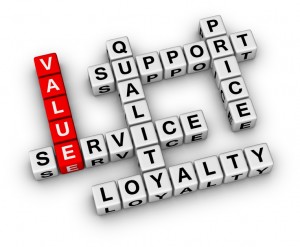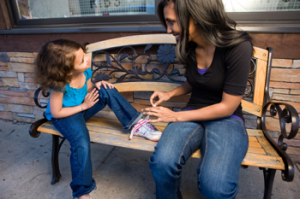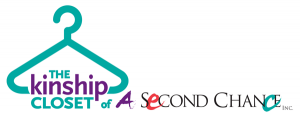 What’s in your “kinship” wallet?
What’s in your “kinship” wallet?
Can you calculate the yearly cost to raise a child? If you navigate here, there is an online tool for doing just that.
How do you assign a “value” to raising a child? Here it becomes a little trickier.
It’s always difficult to associate children with money, but it is a fact of life that there are financial costs associated with raising the children you care for and love. There is without a doubt a value to raising a child that knows no price.
A recent report (click here to read and/or watch) about kinship care in Sacramento, California got me thinking about the price vs. value of kinship care. The story raises a topic of significance to those advocating for kinship care as the first response to foster care. For many, a common response is, it’s her grandson, it’s his niece – they should just do it. How does this thinking relate back to price and value?
There are two challenges here – the price of kinship care and the value of kinship care.
My philosophy of child welfare has always been that the voice of the family is the most important so who better than a kinship caregiver to comment on kinship care, stranger foster care and money.
This what Donita Sears spoke to when a social worker asked her to take on the care and responsibility for her infant niece, Isabella.
“The fact that somebody who chooses to do this is paid more than somebody who’s asked to do it, it’s hard for me to understand. It feels to me like there’s a little bit of a hidden agenda which says let’s go ahead and place these kids with kin because maybe we’re not going to have to pay so much.”
When we treat kinship care different than traditional foster care we are making a value assessment – financial, philosophical and otherwise.
Does the child welfare system “value” kinship care?
There is no doubt that we pay for things we value – a car, a home, insurance, and even a vacation. We often take for granted the things that allow us to survive like air, water, and the ability to communicate.
We have to ask ourselves… How many jurisdictions across the country take kinship care for granted?
For relative caregivers, kinship care can become a labor of love that can grow into not only a constraining financial situation but one of frustration and hopelessness when the practice of kinship care is not valued by the system. The policies and practices of kinship care are in many places secondary to traditional stranger care. In any transaction there is a bottom line and the bottom line I’m reading is that we are not valuing the family.
The piece in California went on to say that as a kinship provider, Ms. Sears would receive $343 a month. If her niece were with a stranger in traditional foster care, she would receive a minimum of $657 from the foster care system. Although the difference of $314 is significant, even more significant are the policies, practice and mindset that allowed this to occur.
In my recently released book, On My Way Home, I wrote:
The child welfare system needs to respect and understand the value that kin bring to the process of caring for children and ensuring their safety. In many ways, kinship care has “saved” the child welfare system both financially and as a resource. With a dwindling number of traditional foster care providers, agency officials have sought out kin to care for their own. Child welfare systems in many jurisdictions are benefiting from kinship care. But there are still other jurisdictions where kinship care remains a challenge and policies of the past still exclude a group of potential caregivers.
The burden is on jurisdictions to consider kin not only as the first placement option but also as the preferred placement option.
Jurisdictions across America have polices and practices in place that support the placement and licensing of kin if the kinship caregiver selects this as an option for their family. Furthermore, judges across America are becoming more aware of the value of kin and have begun placing children with kin regardless of their licensing status. There are no excuses for inequality in provisions between kin caregivers and traditional foster parents. Yet, policies and practices that speak to kinship care are not valued by many jurisdictions in the country.
The challenge is around educating jurisdictions on why kinship care should be the first placement option. The challenge is around the evolution of how we make this happen. When the why and how are in place, issues around financial equity for kinship caregivers becomes logical and valued.
At my agency, A Second Chance, Inc., our model of placing a traumatized child with kin and then licensing the family has worked for 20 years because we understand and believe in the why and how. Kinship care cannot be made to fit the traditional foster care mold – it is separate, purposeful and it is successful when approached from the lens of valuing the family.
The Price of Kinship Care…
Most of us are familiar with Brom’s quote, “Everything comes with a price. Everything. Some things just cost more than others.”
There’s no denying that some things should cost more than others. If anything, Kinship Care should cost more than traditional foster care because the outcomes for children, families and communities are statistically better.
Think about a time in your life when you lost something you valued. Maybe it was a piece of jewelry and the price tag was high. Maybe it was postcard from your favorite aunt or a photo of your grandmother. Maybe it was the flower you saved from your first Mother’s Day bouquet – these things didn’t come with a high price tag but the value was much more significant.
If I could bottle up kinship care and put it on the shelf to sell I would because next to traditional foster care, it is the better value. In many ways I have gone “door-to-door” to sell people on the advantages of kinship care. I am so confident in the advantages of kinship care that I could never assign a price to it.
To borrow a famous advertising campaign…
Payment to relative caregiver… $657.
The value of kinship care… priceless!


